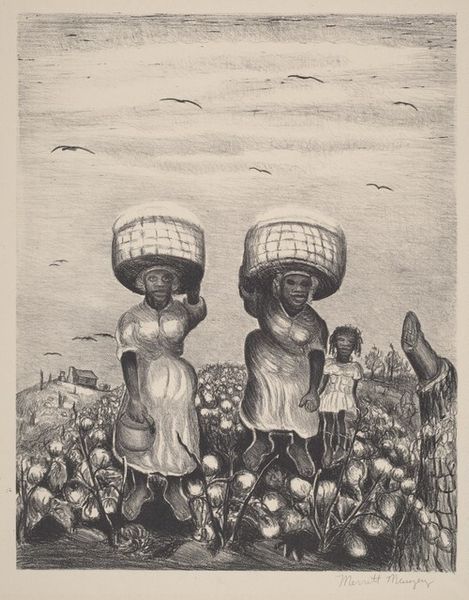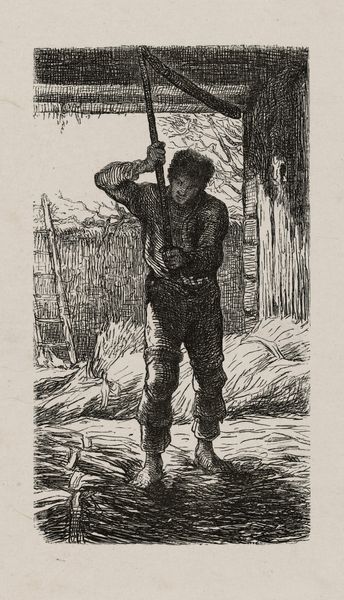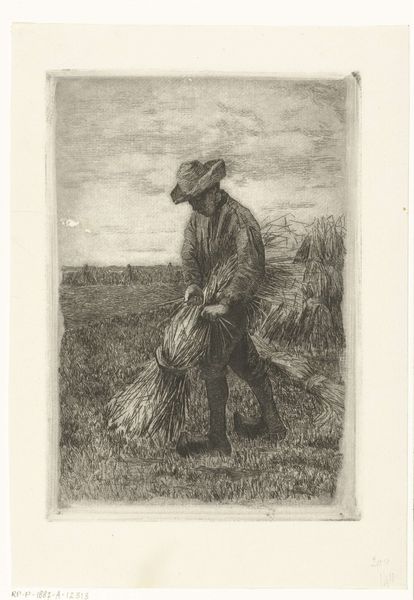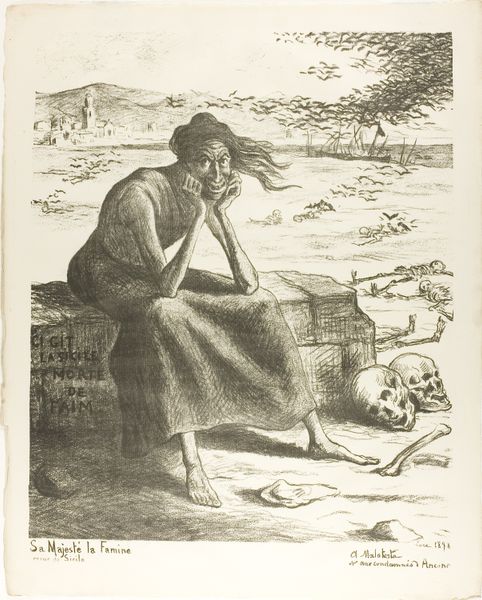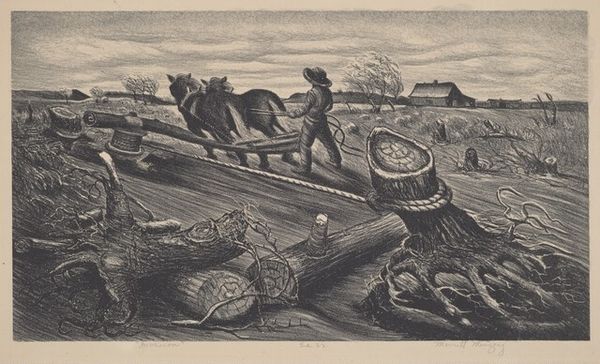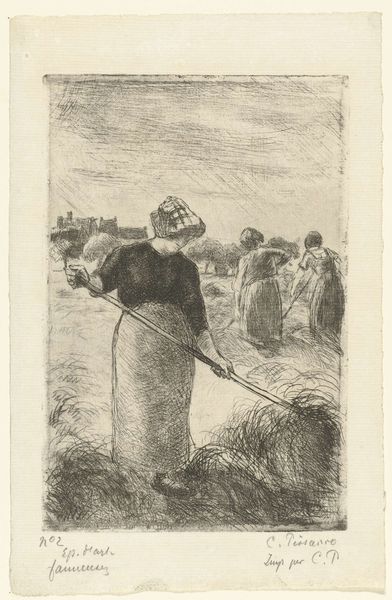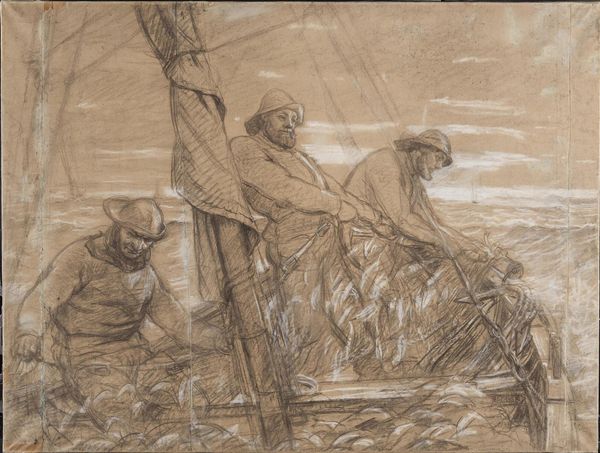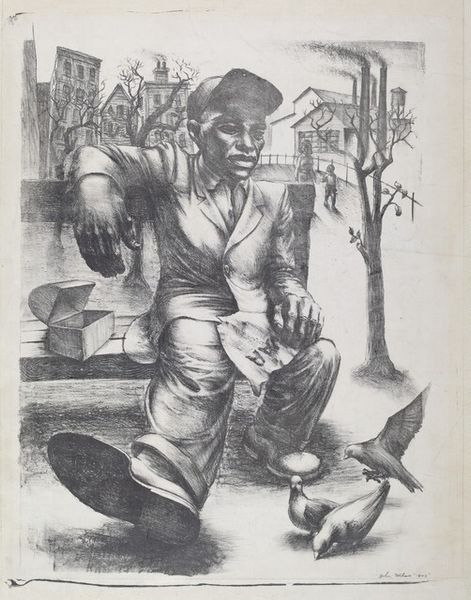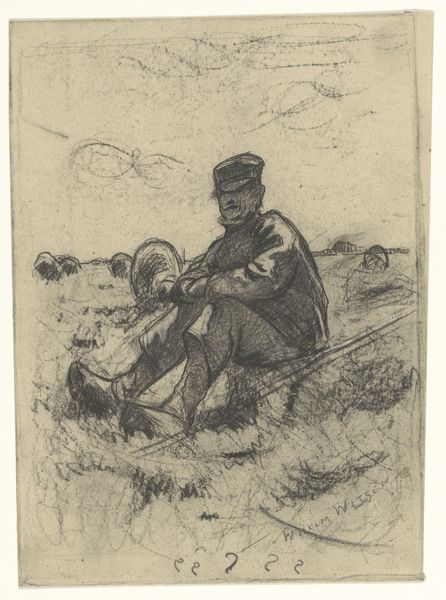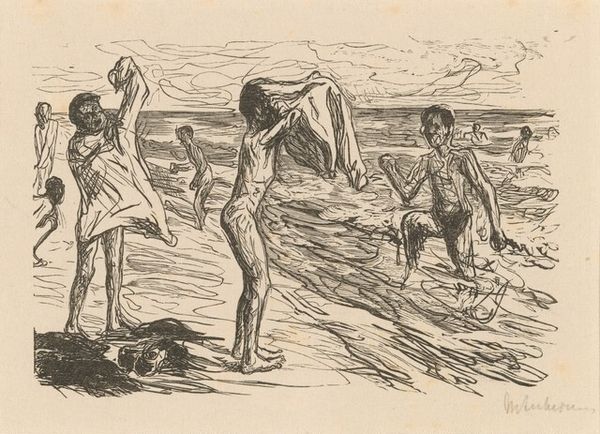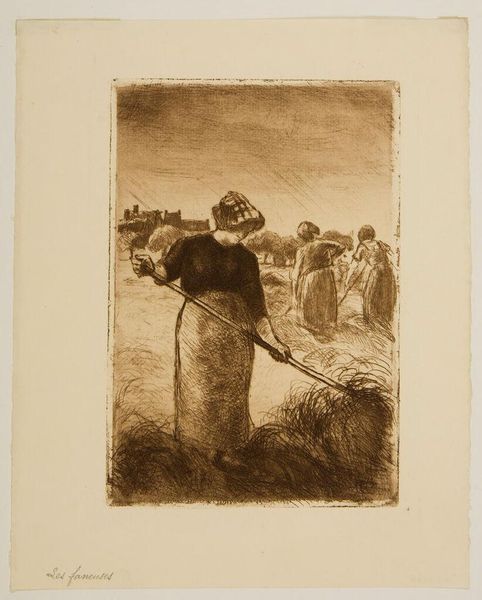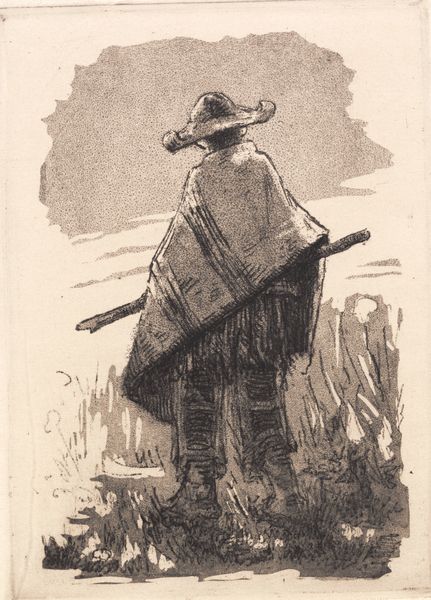
lithograph, print
#
portrait
#
lithograph
# print
#
landscape
#
united-states
#
portrait drawing
#
history-painting
#
regionalism
#
realism
Dimensions: 12 7/8 x 10 1/4 in. (32.7 x 26.04 cm) (image)14 7/8 x 12 1/4 in. (37.78 x 31.12 cm) (sheet)
Copyright: No Known Copyright
Curator: What a striking image. This is John Steuart Curry’s "Our Good Earth," a lithograph from 1942 here at the Minneapolis Institute of Art. Editor: Immediately I'm hit by that central figure – strong, stoic. Almost biblical, leading his children through what looks like a field of wheat? It's somber, almost ominous. Curator: Yes, Curry was part of the Regionalist movement, celebrating rural American life. But he never shied away from its hardships. Notice the wheat in the father's hand—a symbol of promise, but the looming sky suggests a coming storm. Editor: The wheat—such an ancient symbol of prosperity and sustenance, often linked to Demeter or Ceres. Here, though, it feels like a fragile offering, almost a question of survival. The way he’s leading those children too—it evokes images of hardship, maybe even migration, in the face of adversity. Curator: Definitely. Curry often explored the themes of resilience and the enduring bond between people and the land. This work appeared during a time when the country was beset by economic depression and war, underscoring a kind of stoicism—what's truly important. He rendered all that just through the manipulation of the black and white ink and paper of his print. Amazing, really. Editor: It's interesting, this idea of finding the universal in the regional. Curry uses these specific details of rural life to touch on much broader themes. I’m still caught by that sky. It gives the entire scene such weight, emotionally. And makes that wheat look even more symbolic somehow. It takes on so much meaning just being there! Curator: For sure. Curry always saw the Midwest landscape as inherently dramatic, full of struggle and beauty. And his genius lay in showing that simple dichotomy with what might appear, at first glance, a kind of basic landscape sketch. Editor: I see this lithograph resonating far beyond its regional focus; its depiction of perseverance in the face of uncertainty feels universal, and maybe especially now feels rather appropriate. Curator: Yes. This print certainly transcends its time and place, asking profound questions about where we find our strength in a world full of unknowns.
Comments
minneapolisinstituteofart almost 2 years ago
⋮
A pioneer of the American Regionalist movement, John Steuart Curry sought to reveal the diligence and simple dignity of the people of the rural Midwest. In this lithograph produced during World War II, Curry presents the American farmer as a proud and heroic figure, standing among the fruits of his labor, with the next generation of farmers by his side. For Curry, the farmer—hard-working, self-reliant, and honest—embodied the American moral and ethical ideal. In this role, the farmer is also emblematic of freedom from hunger, a point of national pride during wartime.
Join the conversation
Join millions of artists and users on Artera today and experience the ultimate creative platform.
